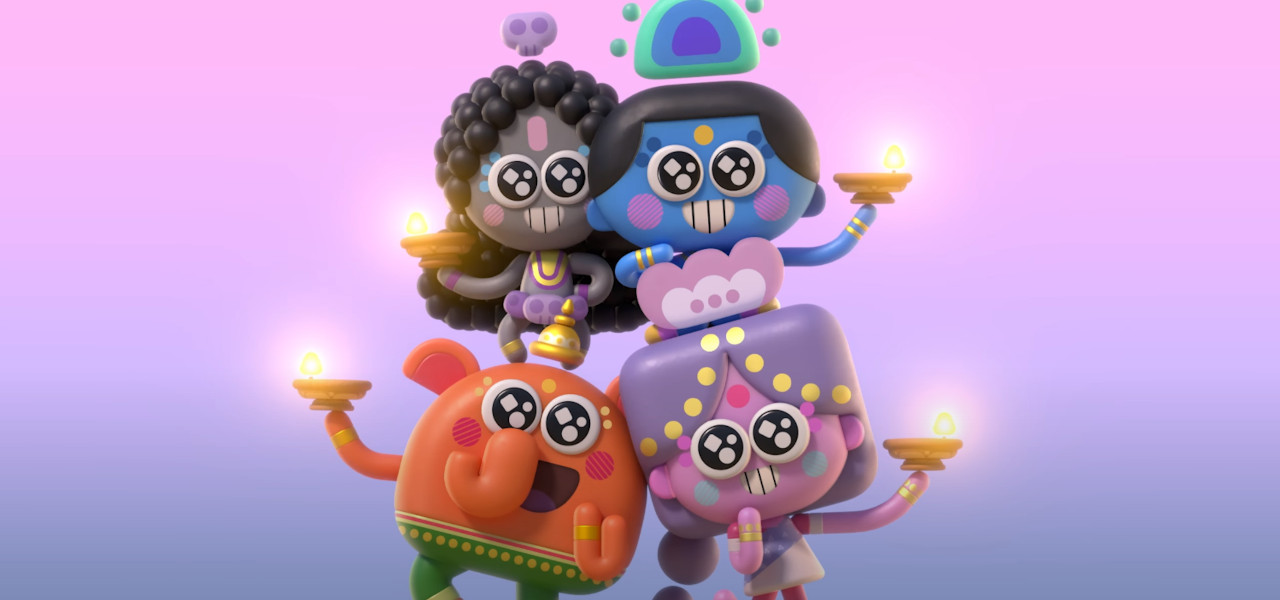
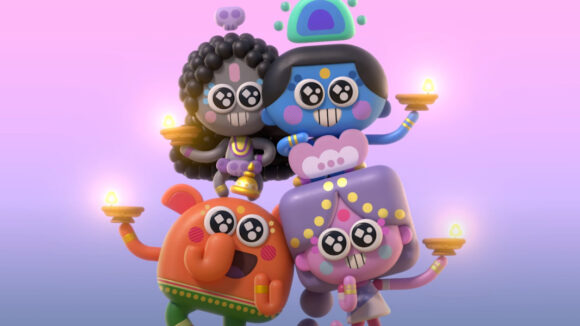
The Multiple Lives Of ‘Ghee Happy’: A New Youtube Series With A Daring Approach To CG
Ghee Happy has taken an unconventional route from conception to release. Ex-Pixar animator Sanjay Patel (Incredibles, Ratatouille) initially developed the preschool cg series with help from French animation studio Superprod and backing from Netflix. However, at the eleventh hour, Netflix decided to drop the series, leaving Patel and his team to either release the show independently or kill the project.
To honor the hard work of artists who contributed to the production, Patel set up a “one-man distribution team” to get Ghee Happy out into the world.
“If we could get into a time machine and do things differently, we would have saved resources to properly distribute the show,” Patel told Cartoon Brew. “But what I will say is, as a creator, I am actually thrilled to learn about Youtube.” (Netflix declined to comment on the legal arrangement between Patel and the company, which allowed the series to be launched on Youtube.)
Lead animator and designer Chris O’Hara is similarly optimistic about the show’s prospects now that it has landed on one of the world’s most accessible platforms. “The idea of this show going on to Youtube is not something that saddens me,” he said. “It could have an even greater reach because it’s free, and the whole world is potentially the audience. There are just fewer restrictions.”
Ghee Happy reimagines Hindu deities as children who discover their divine powers through daily adventures at the Ghee Happy daycare center. Aesthetically based on Patel’s vector artwork, the show also takes inspiration from various other places, including the work of British animation director Grant Orchard. “The second I saw Hey Duggee, my brain just melted down,” Patel recalled.
Distribution tactics wasn’t the only shift that happened with Ghee Happy – it also switched production techniques. The series initially started as a 2d project, but over time, it began to take shape as a cg show with a philosophy borrowed from 2d animation. O’Hara joined the project during the transition, and his strong 2d background was key in maintaining the show’s original aesthetic spirit.
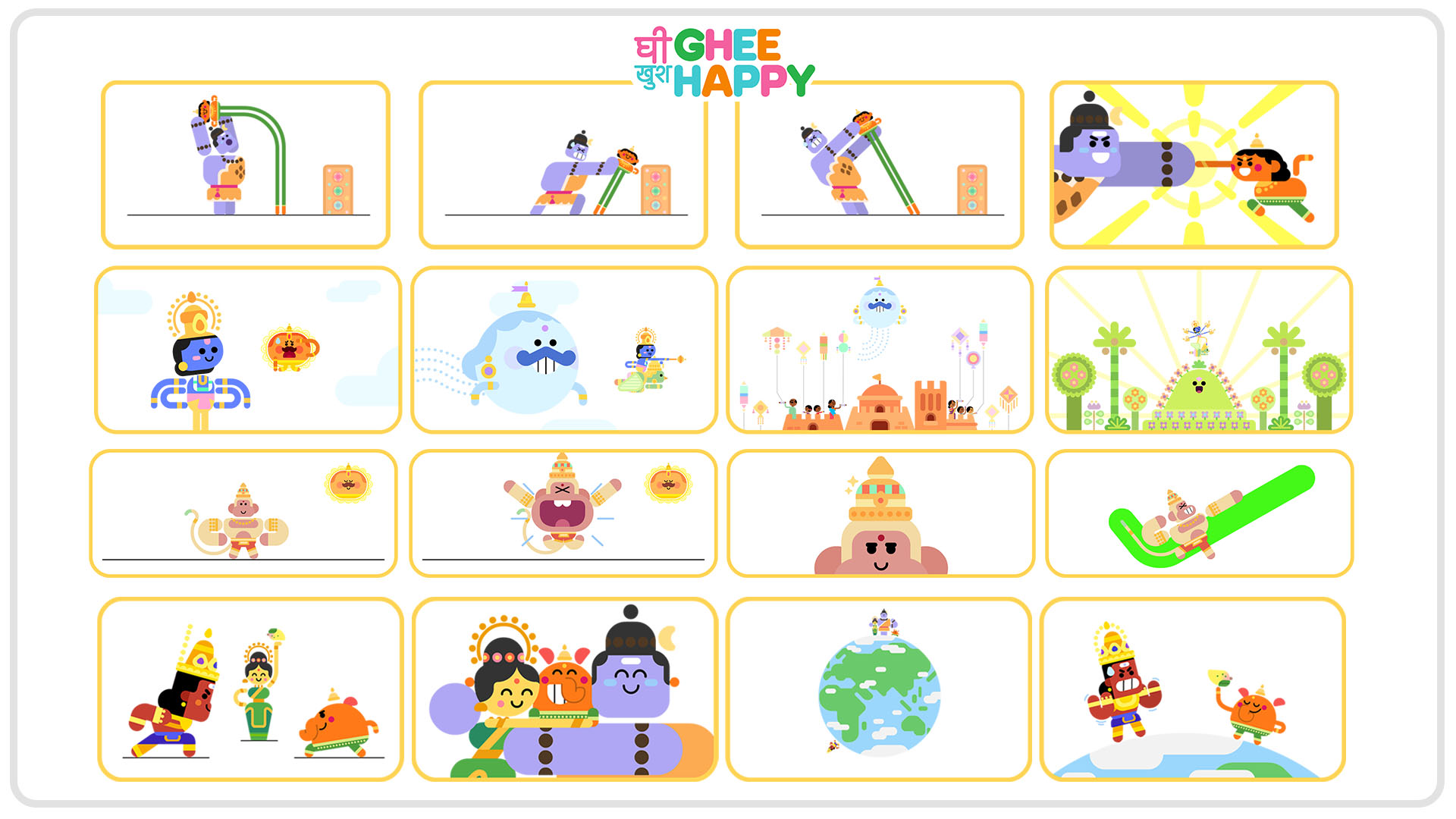
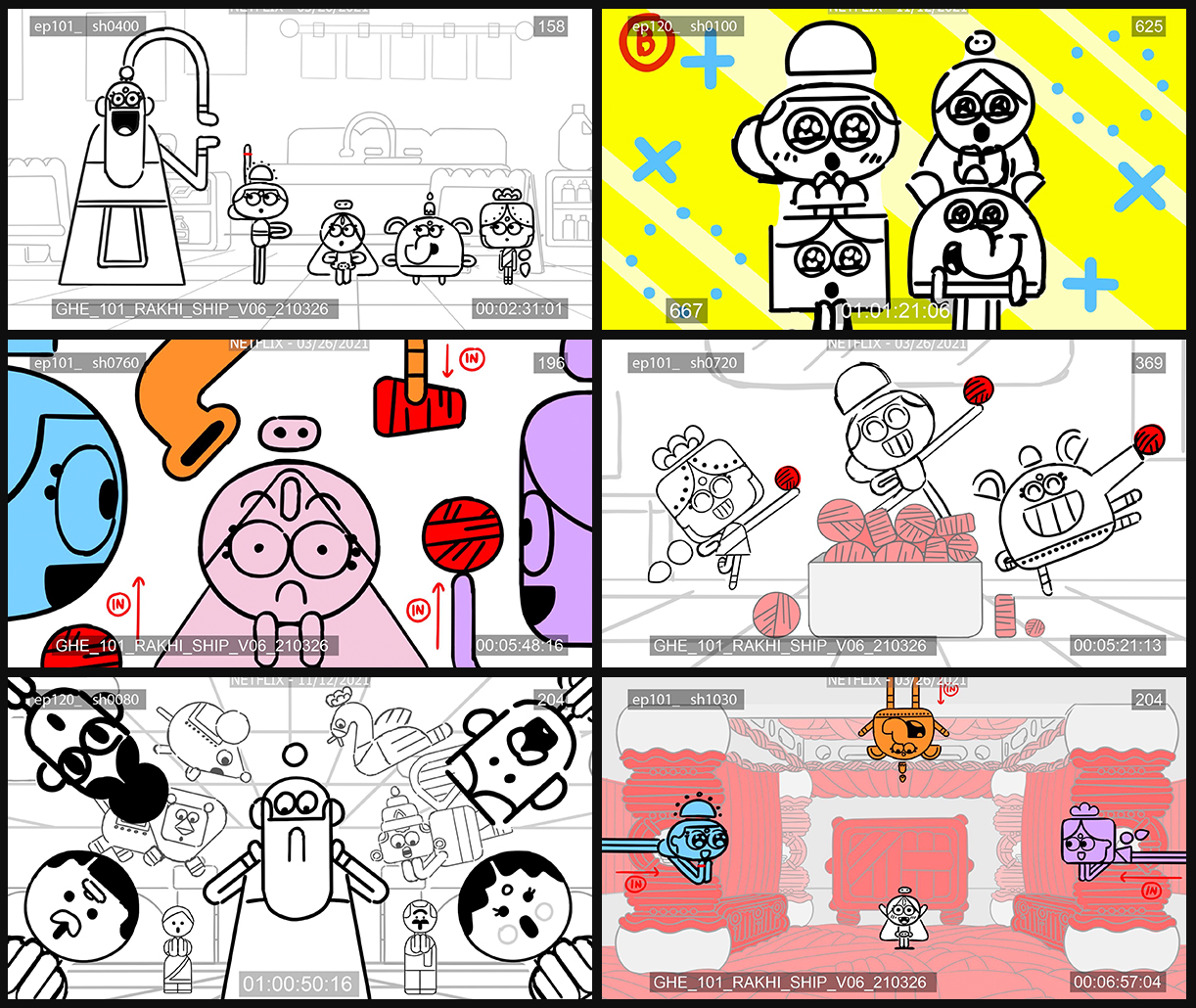
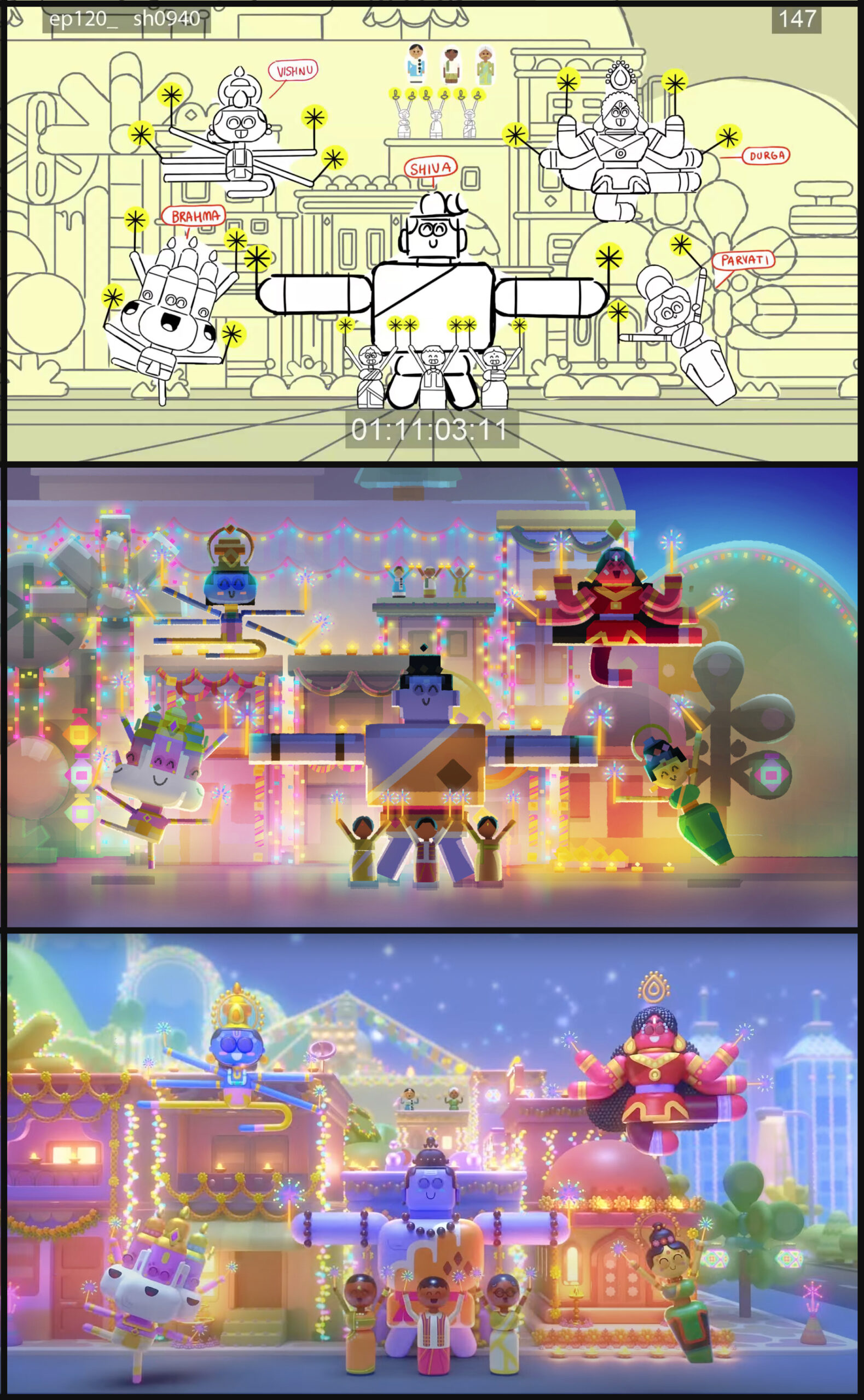
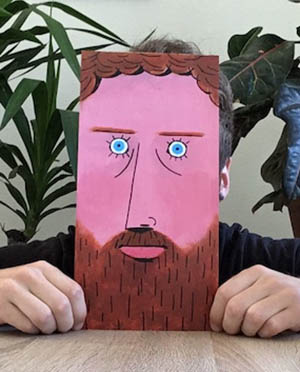
O’Hara told us that before he joined the production, “There was a lot of 2d work done. It looked amazing. It was graphic, highly stylized, and in line with the aesthetics I enjoy. So when I came on, and we pivoted to cg, the goal was to maintain this very clean graphic style in cg.”
O’Hara added, “Thankfully, we were able to include similar designs to those originally in some of the 2d sequences of the show. But pivoting to cg took a lot of research, looking into all the existing art out there, and trying to translate that into animation. A lot of the art is very lavish and can be quite busy. These things, as pieces of still art, look beautiful and amazing, but when you translate that into a moving show, you have to know where you want the focus to be.”
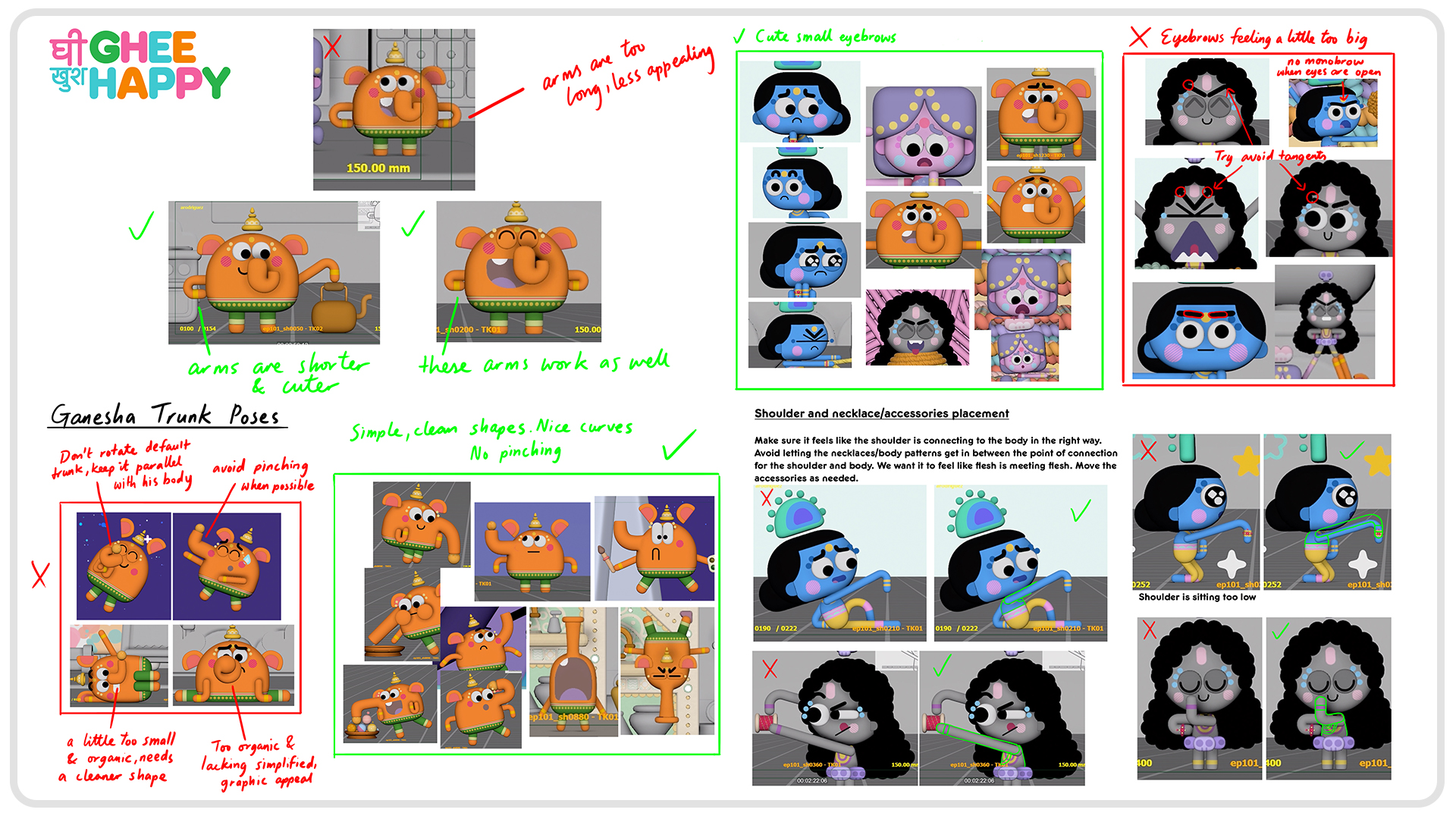
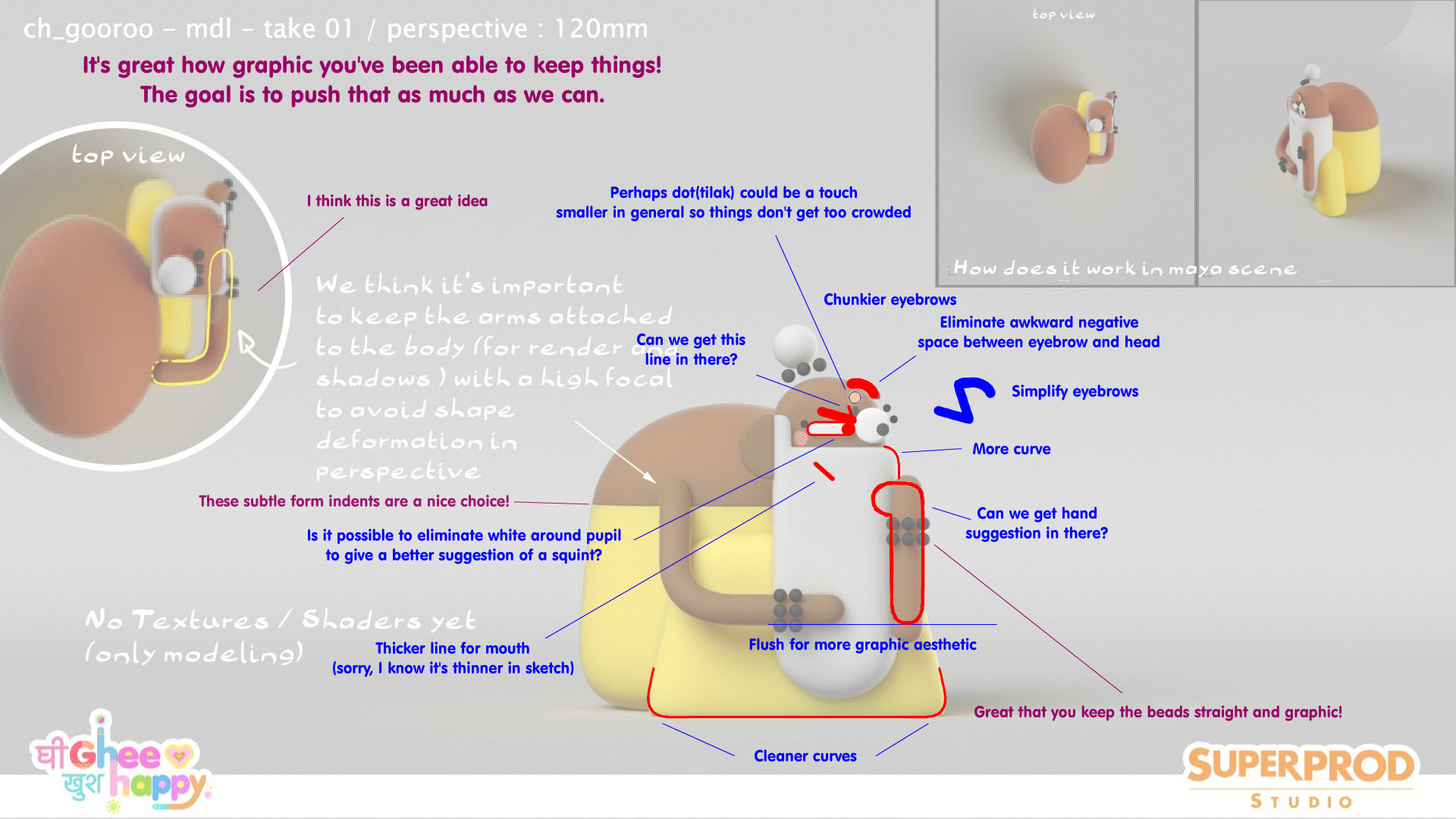
The artistic success of Ghee Happy rests on the trust Patel has in his collaborators. Of O’Hara, he says, “He’s a phenomenal filmmaker, animator, and character designer. And the fact that it all came in one human at the right time was incredible.”
One of O’Hara’s suggestions, which proved vital to the show’s design, was a different approach to character models. Instead of the usual 360-degee 3d model, O’Hara worked with Olivia de Thevenard and Tanguy Launay at Superprod to make each rotation of the character its own model. Said Patel, “It was insane. That was so cool of Superprod because we burnt a lot of gas that way, but they were so excited about keeping the 2d integrity in three-dimensional space.”
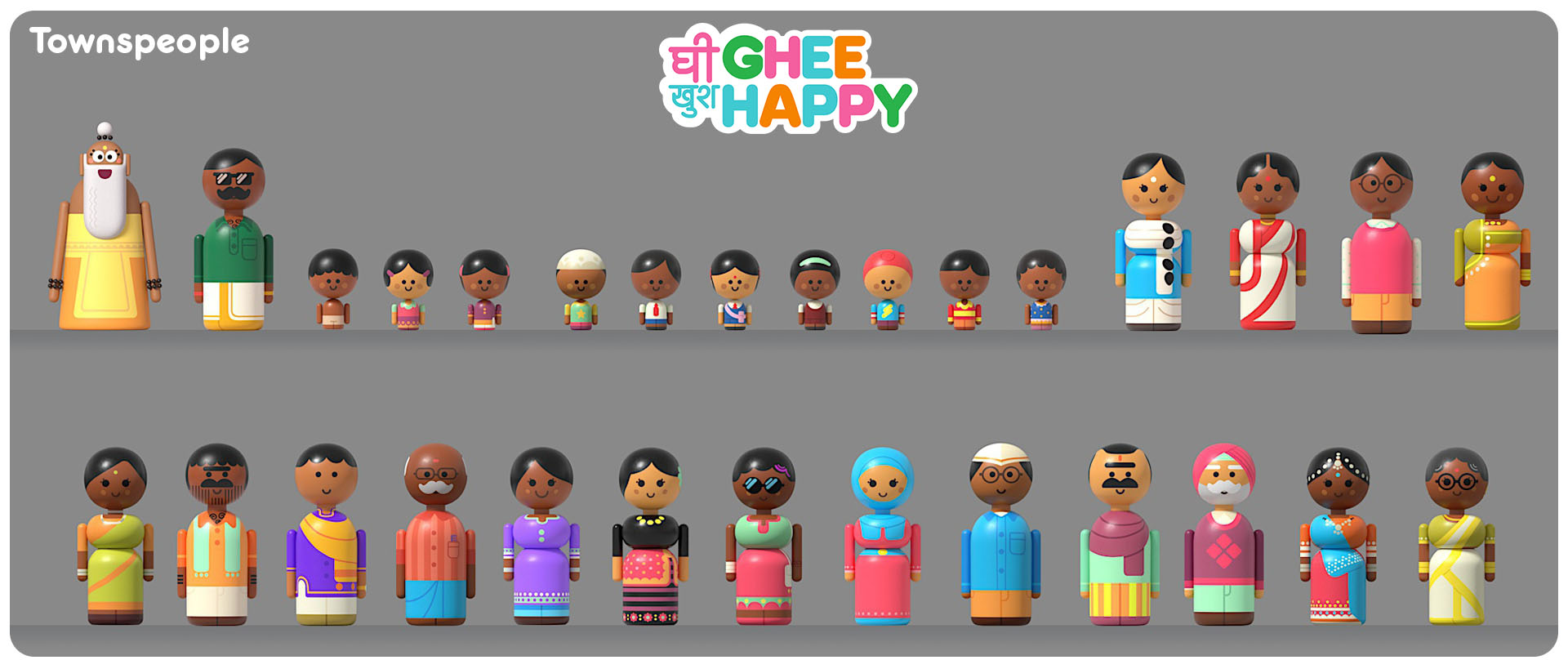
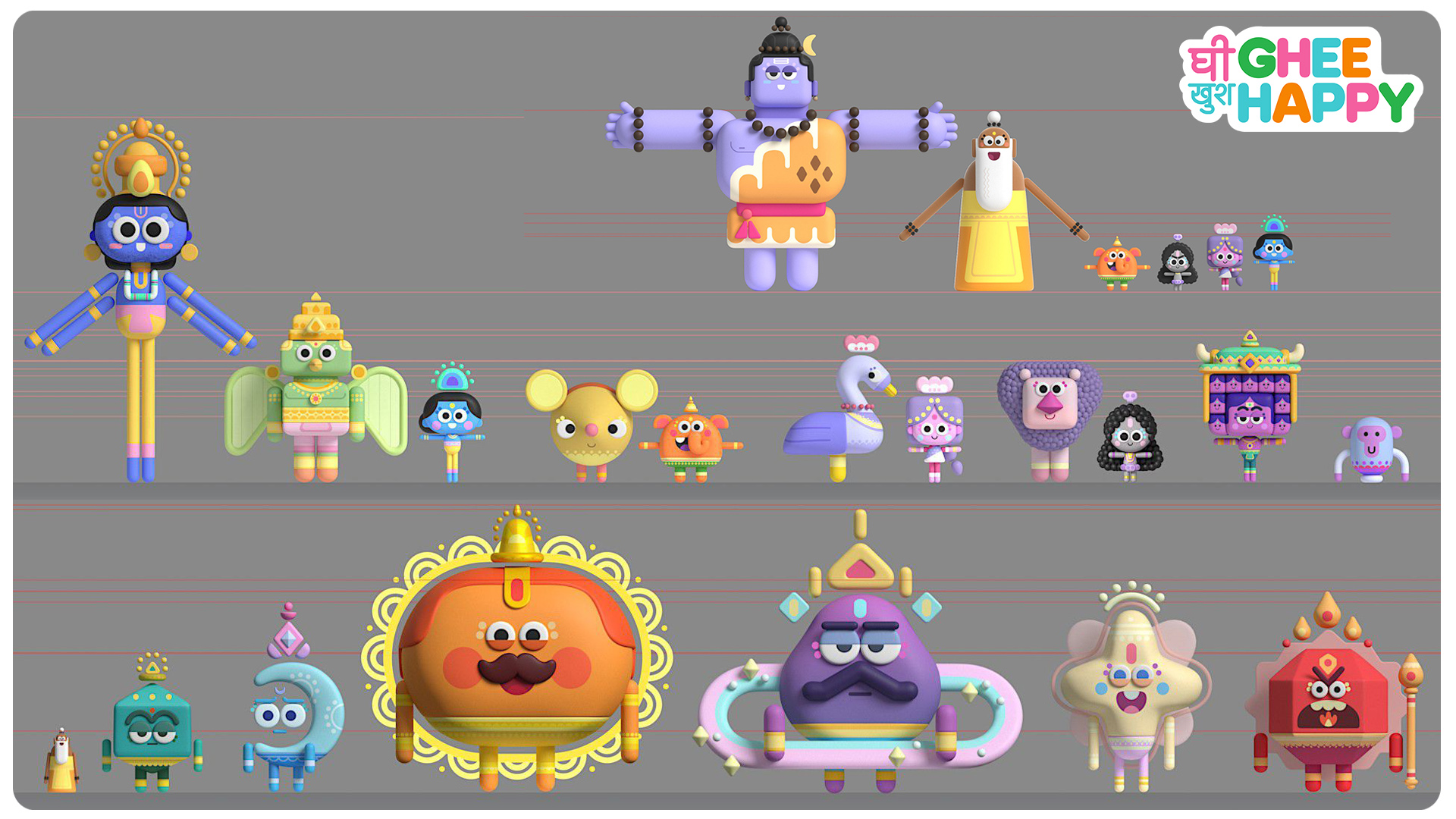
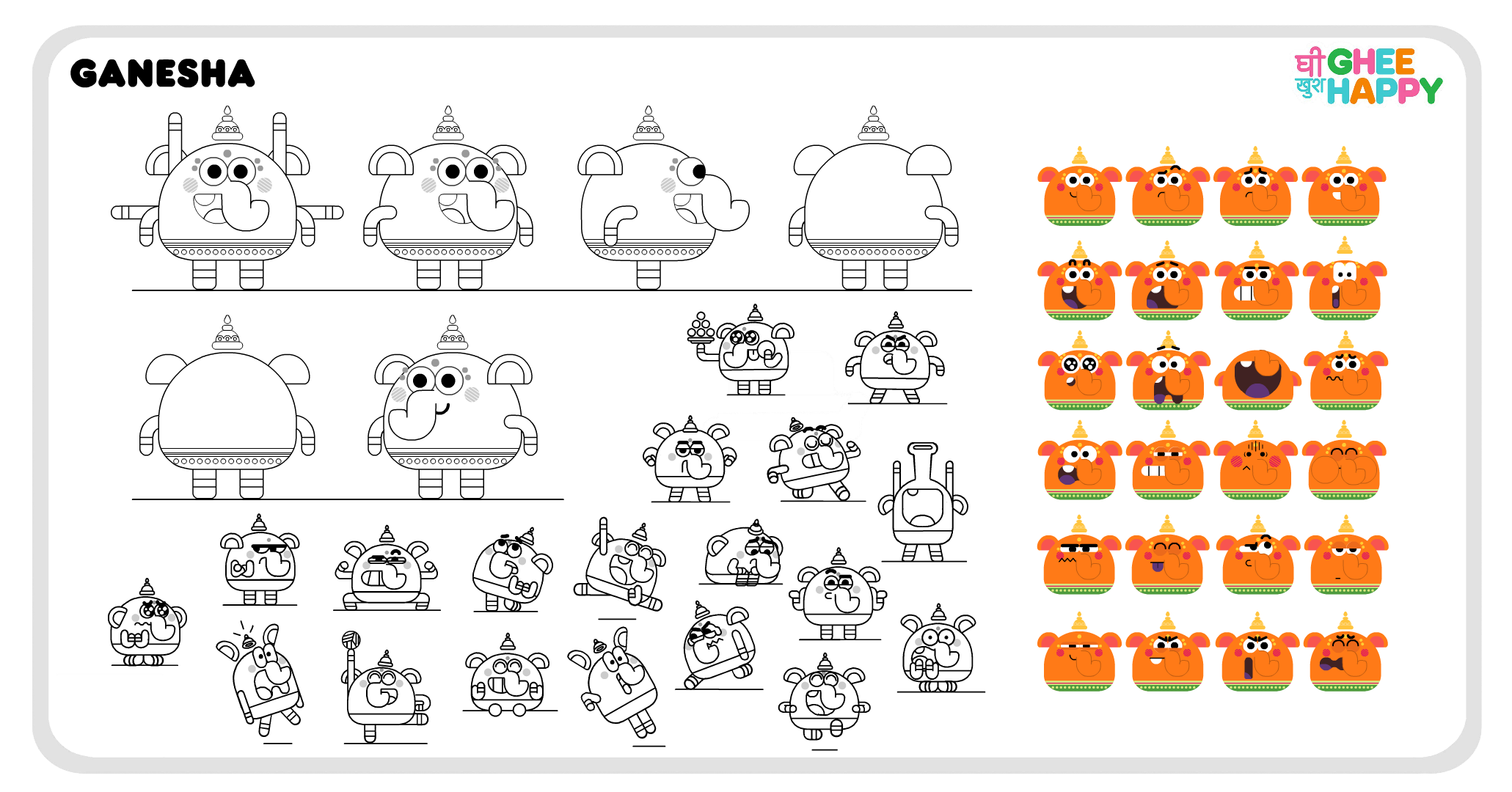
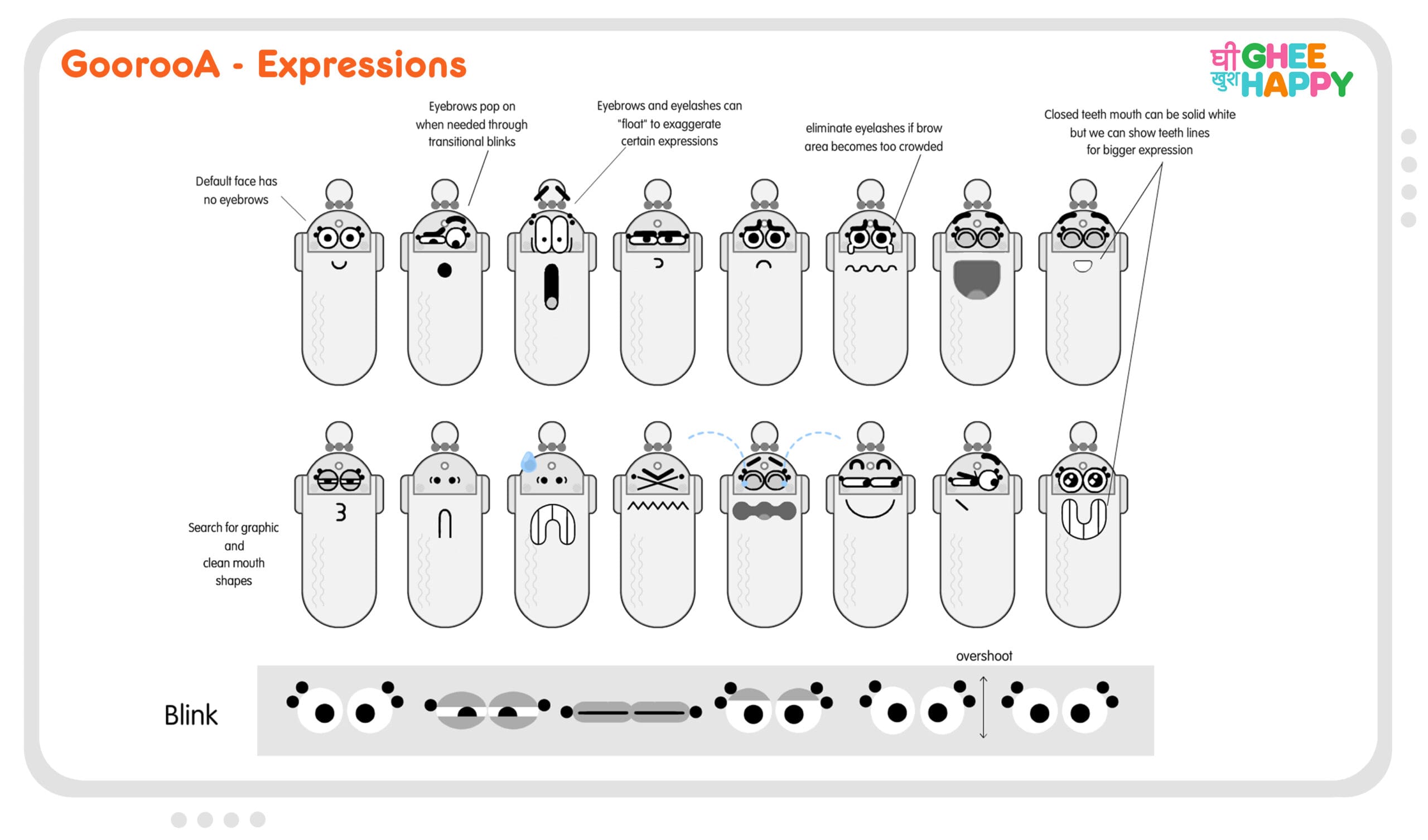
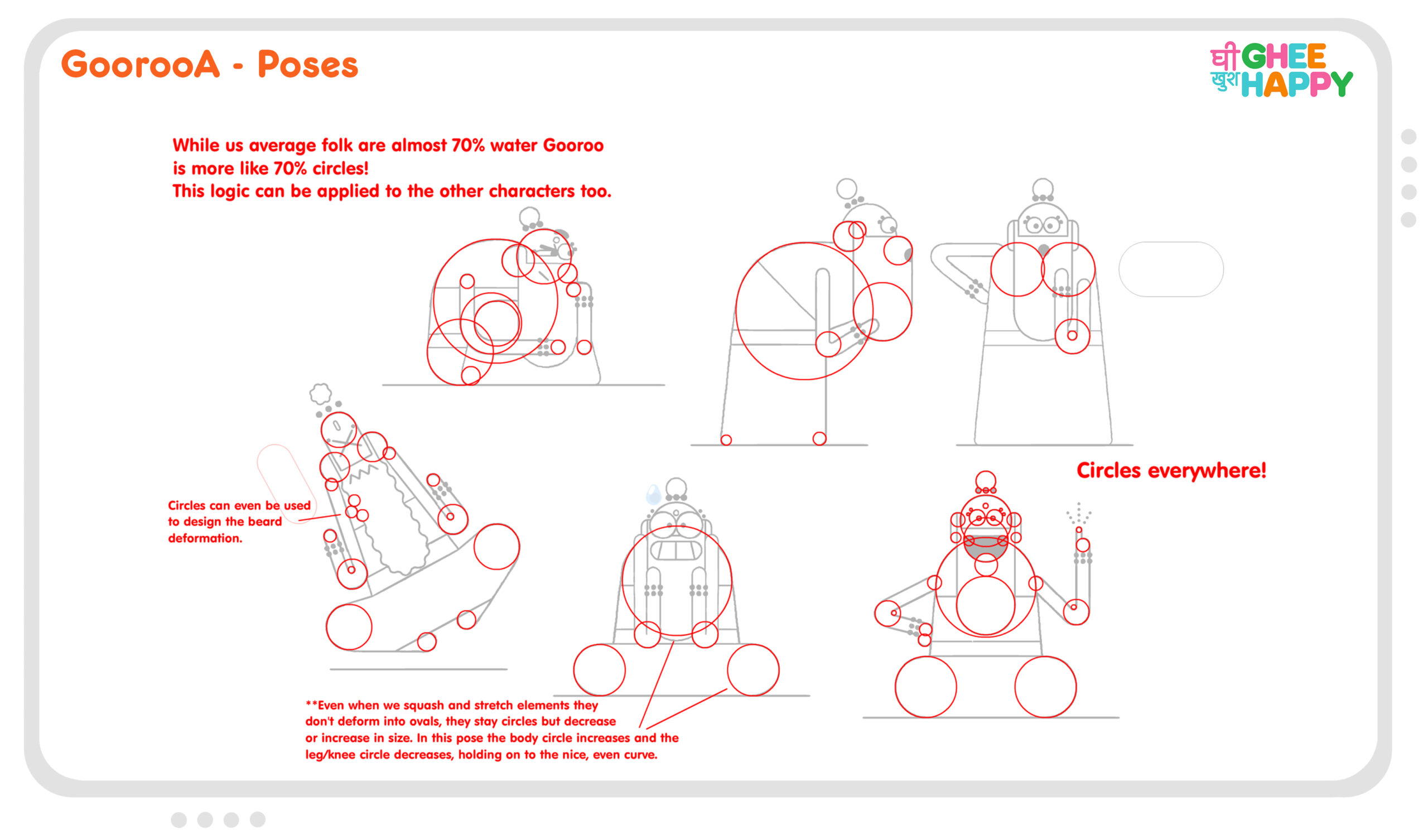
Service studio Superprod’s role in the production was vital to the finished show. According to O’Hara, “Often, service studios don’t get the credit they deserve or aren’t afforded the creative freedom that I feel a lot of them should get. With Superprod, we had a lot of back and forth, and we wanted them to feel very involved creatively and like they could make creative decisions.” Ideas coming from all angles allowed Ghee Happy to be more experimental and break the mold of a typical cg preschool show.
“We’re going to play with frame rate here, but it won’t just be 12 frames a second. We’re going to put things on threes, we’re going to put things on fours and things on sixes,” O’Hara explained. “That requires rules. You’re not just doing it randomly. There are appropriate moments to do that. That requires a bit more guidance, perhaps. And sure, it made things a little bit more difficult there for Superprod, for a cg show to do that, but again, they always seemed very open to it and excited about it.”
The result is a show with characters who satisfyingly snap between poses and who can express themselves through minute details of their movement. As O’Hara puts it, “If the Disney thing is, ‘The illusion of life,’ this is the impression of life,” an impressionistic visual approach to an exploration of religion.
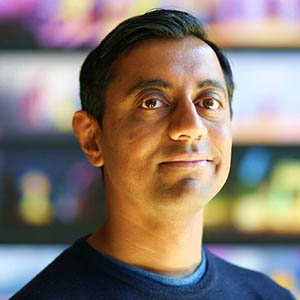
Ghee Happy interprets Hindu mythology and spirituality for preschool-aged children, a lofty but personal starting point for Patel. In his Pixar short Sanjay’s Super Team, Patel explored the generational divide between American Desi children and their parents who had grown up in the East. When he became a father, Patel faced complicated feelings about sharing his cultural heritage with his children.
“When I was making the show, I was highly aware that I was doing the same thing my father did,” Patel explained. “But I never wanted to be the brown guy trying to make his mixed heritage kids feel extra brown. I don’t want that to be my burden because I feel like that’s just a recipe for, I don’t want to say rejection, but I think that can create a conflict. They see me do it, they come into my office, it’s full of [Desi] stuff, and they see that I am completely obsessed with it as well. But it’s never like, ‘Hey, I want you to draw this deity,’ or ‘Hey, let’s read this book about a deity.’ So when it came to the show, I was clear that I wanted first and foremost to help all kids, not just brown kids, find the easiest step on this ladder [towards cultural appreciation].”
The show’s spiritual angle also connected with O’Hara as his attitudes towards religion changed. “As I jumped on this show, the idea of spirituality was something that I was rediscovering through reading Joseph Campbell, Carl Jung, these people that were suddenly speaking to me in my personal life,” he said. “It was interesting that there’s a little synchronicity there. This project came along, and I was in the middle of this chapter about Shiva.”
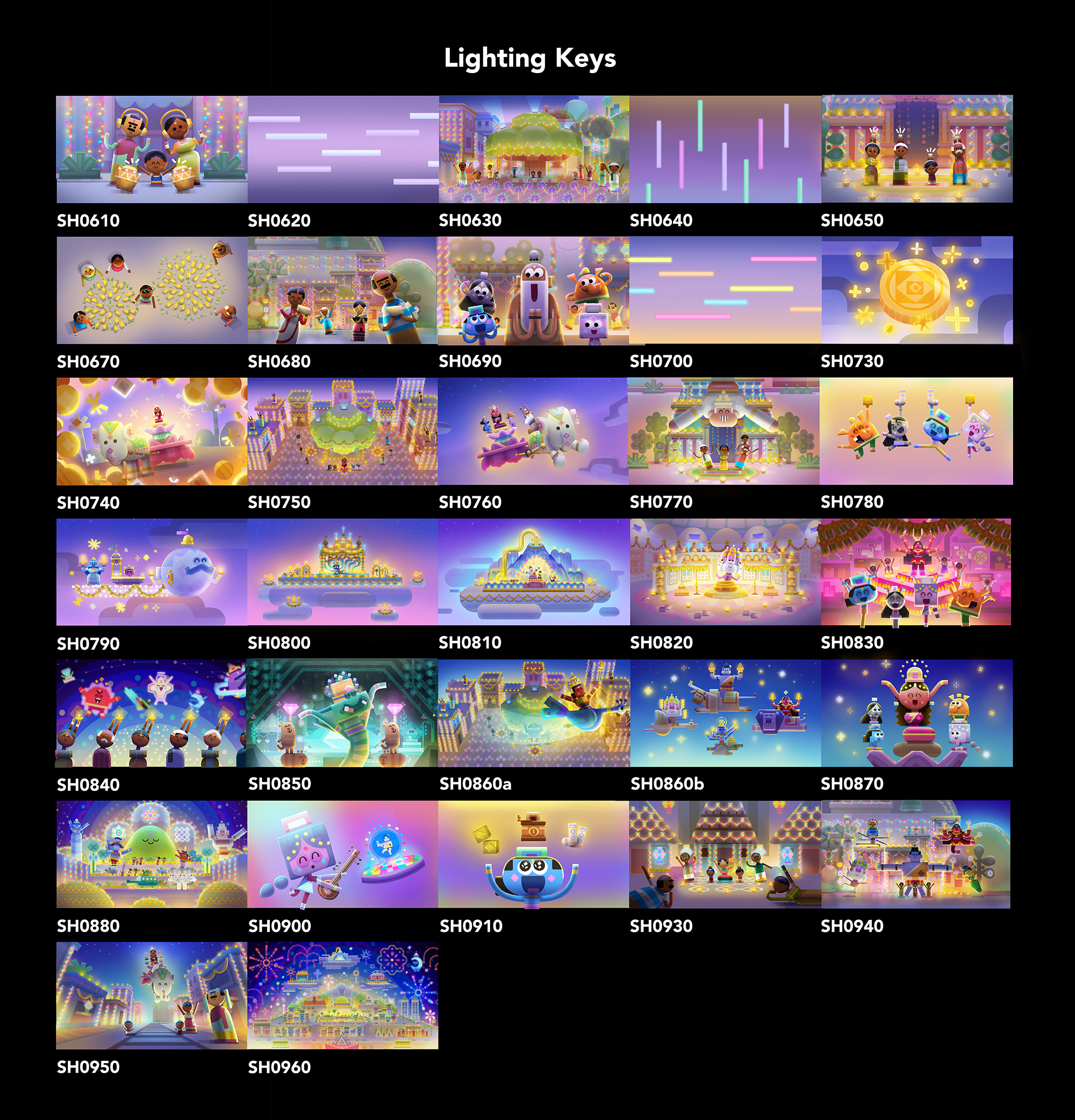
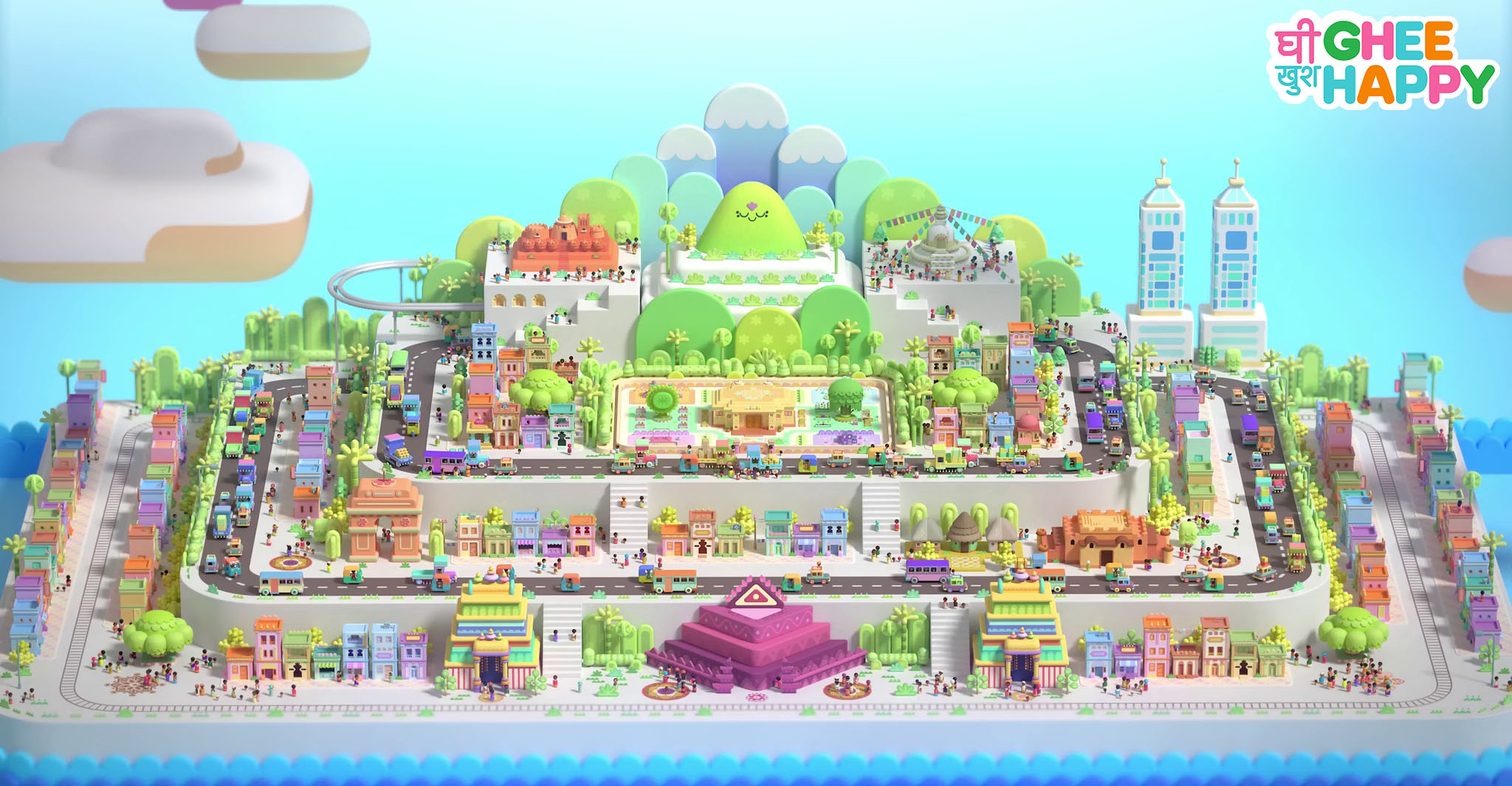
One of the show’s primary objectives was to make heady, philosophical themes accessible to kid audiences.
“I think it’s so important, particularly in preschool, because I think there is so much stuff out there that’s just loud noises and bright colors, and it’s like, ‘What gets the child’s attention?’ versus, ‘What can have a meaningful impact?'” said O’Hara. “Finding real meaning in the things that I make is pretty important, and I want to make sure that I’m working on the right things being put out into this world, and this project felt like that.”
For Patel, Ghee Happy is a way of introducing young viewers to different philosophies than they are used to. “When I was working at Pixar, my nieces and nephews knew everything about all the Pixar movies, but they didn’t know anything about their cultural mythology,” he said.
By contrast, Patel explained, “In Ghee Happy, there are universal ideas, but there are also ideas that are very Eastern that I didn’t want to be diluted, that are unique to the Indic point of view. One example is the idea that life is linear, which is the Greek idea. When you have a finite life, everything hinges on you making the most of it. But if you have that Eastern worldview, I think Campbell calls it the Occident versus the Orient, the East (or India) would say, ‘You know, what, don’t stress, there’s multiple lives here.'”
Existential messaging about reincarnation and the fragility of existence is difficult to square with a preschool show, but through animation, Ghee Happy communicates the big ideas. “We have an interesting episode about Vishnu, the God of preservation,” Patel said. “The gods discovered that when he falls asleep, everything disappears, and they figured out a way to sort of wake him up and for reality to come back into being. I know it’s a big idea for preschoolers, but I think we pulled it off.”
If there is a silver lining to Netflix dropping Ghee Happy, it’s that the highly ambitious show is now available to a global audience free of charge. Perhaps the Eastern concept of multiple lives doesn’t just apply to people, but to animation productions as well.
New episodes of ‘Ghee Happy’ are being regularly released on the show’s Youtube channel.

